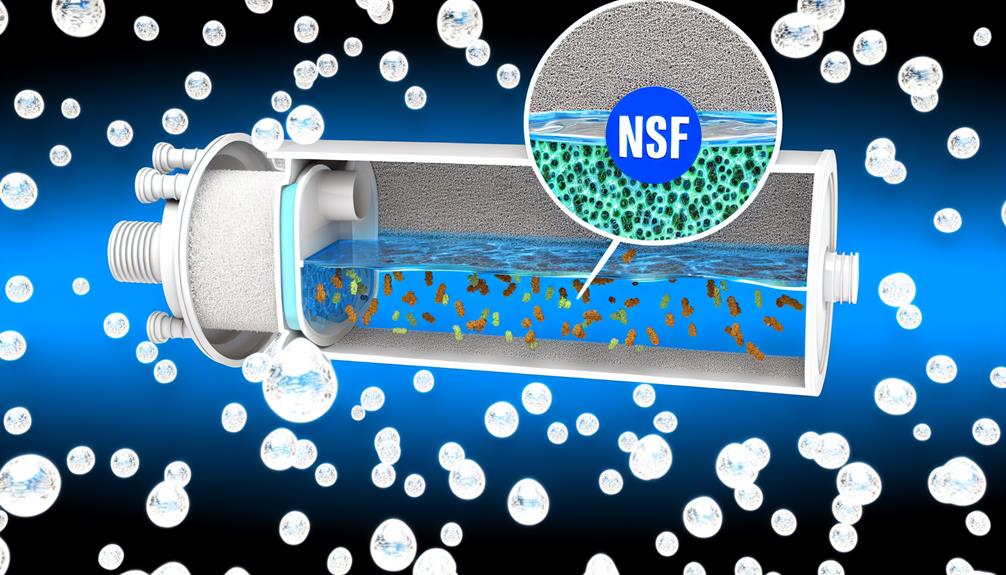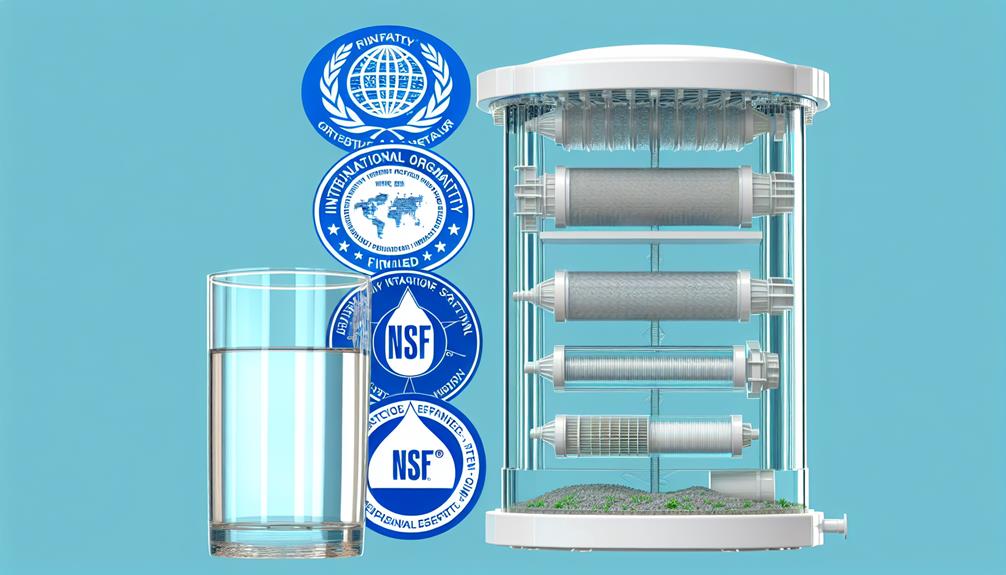You filter your water, you trust its purity, and you believe you're safe – but are you fully aware of the stringent requirements the Environmental Protection Agency (EPA) has set for water purifiers?
As a user of these essential household devices, it's crucial for you to understand the specific mandates that govern the operation and efficiency of water purification systems in the United States. The EPA has established a comprehensive set of rules designed to ensure that the water you consume is free from harmful contaminants and pathogens.
These rules not only dictate the minimum levels of purification required but also encompass a broader scope involving testing, monitoring, and reporting practices that manufacturers and water facilities must adhere to.
While you enjoy that next refreshing glass of water, ponder on the unseen shield of regulations that stand between potential hazards and your well-being—and consider what complexities and challenges these mandates may present to the industry and ultimately, your access to clean water.
EPA Certification Standards
The EPA establishes rigorous certification standards for water purifiers to ensure they effectively remove contaminants and safeguard public health. Under the Safe Drinking Water Act (SDWA), the EPA sets legal limits on the levels of certain contaminants in drinking water. These limits are reflective of both the latest scientific understanding and the technical feasibility of water purification.
As you navigate the landscape of drinking water regulations, you'll find that water suppliers and public water systems (PWSs) are required to comply with these standards to protect consumers from the health effects of contaminants. The EPA's certification process for water purifiers is designed to assess whether these devices meet the necessary performance criteria for reducing specific contaminants.
Manufacturers of water purifiers must demonstrate through rigorous testing that their products can reliably reduce pollutants to levels that comply with EPA standards. This certification is evidence-based, ensuring that consumers can trust the safety of their drinking water when using EPA-certified purifiers. It's not just about meeting the minimum requirements; it's about upholding a standard of public health protection that's backed by thorough analysis and regulatory oversight.
Contaminant Reduction Requirements
To protect public health, water purifiers must meet Contaminant Reduction Requirements, effectively lowering the presence of harmful pathogens like Legionella, Giardia lamblia, and Cryptosporidium in drinking water. Under the Safe Drinking Water Act (SDWA), water systems that use surface water or ground water under the direct influence of surface water are mandated to filter and disinfect water, aiming to meet or exceed the established maximum contaminant level goals (MCLGs).
The MCLGs are set with a public safety margin, targeting zero illness from contaminants. For instance, the Interim Enhanced Surface Water Treatment Rule (IESWTR) enforces a maximum contaminant level goal of zero for Cryptosporidium, compelling specific public water systems to adhere to strengthened filtration criteria.
Compliance with these contaminant reduction requirements is non-negotiable for water purifiers, and the EPA facilitates this process by providing detailed guidance documents. Moreover, the EPA's framework allows for a responsive dialogue through questions, feedback, and problem reporting channels.
This regulatory focus ensures that the water purifying systems you rely on are held to the highest standards of public health protection, particularly concerning the waterborne pathogens addressed by the Drinking Water Act.
Testing and Performance Criteria
Water purifiers undergo rigorous testing to ensure they meet performance criteria that dictate their effectiveness in removing harmful contaminants from drinking water. These criteria aren't just recommendations—they are stringent regulations that manufacturers must adhere to for the sake of public health. You're looking for a purifier that doesn't just promise, but proves it can safeguard drinking water quality.
Here's what these testing and performance criteria typically involve:
- Verification of Contaminant Removal: Purifiers must demonstrate they can effectively remove specific contaminants, including microbial pathogens, to levels deemed safe by health authorities.
- Efficiency and Reliability Assessments: It's essential that your water purifier consistently performs over time, maintaining its ability to treat water without significant degradation in efficiency.
- Compliance with Established Standards: Your purifier shouldn't only meet but ideally exceed, the minimum requirements set forth by regulatory bodies to ensure optimal health protection.
As you navigate the world of Water Treatment, understand that these criteria form the backbone of trust between you, the consumer, and the manufacturers. They're not just meeting the bare minimum; they're competing to provide the highest level of protection, solidifying the critical link between testing and performance criteria and the delivery of high-quality drinking water.
Monitoring and Reporting Obligations
Ensuring public health and safety, public water systems are mandated to monitor and report on the quality of the water they provide, adhering to strict guidelines set forth by the EPA. These regulations are designed to protect public health by requiring water purification processes that effectively remove or neutralize harmful contaminants.
Under the Interim Enhanced Surface Water Treatment Rule (IESWTR), systems using surface water or GWUDI must meet enhanced water filtration standards, aiming to achieve the maximum contaminant level goal of zero for Cryptosporidium—a pathogen known to cause gastrointestinal illness. Additionally, the Filter Backwash Recycling Rule (FBRR) ensures that recycled filter backwash water undergoes full treatment before re-entering the water supply, further safeguarding against contamination.
The EPA provides guidance documents to facilitate adherence to the Safe Water Treatment Rules (SWTRs), which includes monitoring and reporting obligations. It's critical that you stay informed about these regulations and reach out to the EPA with any questions or to report issues.
Drinking Water Information updates, such as the last on June 30, 2023, reflect the ongoing commitment to maintaining a safe water supply and must be closely followed to ensure compliance.
Labeling and Consumer Information
Public water systems provide Consumer Confidence Reports (CCRs) to inform you about the quality of your drinking water and whether additional filtration is warranted. These CCRs are a crucial part of the consumer information mandated by the Environmental Protection Agency (EPA) under the Safe Drinking Water Act (SDWA). They ensure you're aware of what's in your water and if the levels of contaminants exceed the regulatory standards.
When it comes to water purifiers, the EPA has specific labeling requirements that ensure transparency and safety for consumers:
- Performance Data: Labels must disclose the specific contaminants that the purifier is certified to reduce, along with the reduction rate.
- Certification Information: If a product is certified by an accredited organization, that information should be clearly labeled.
- EPA Registration Number: For products that are registered with the EPA, the registration number must be displayed on the label.
The inclusion of this consumer information on water purifier labeling is designed to provide you with evidence-based assurances that the product meets regulatory standards for drinking water treatment. You're encouraged to use this information to make informed decisions about the water treatment solutions you choose for your home.

